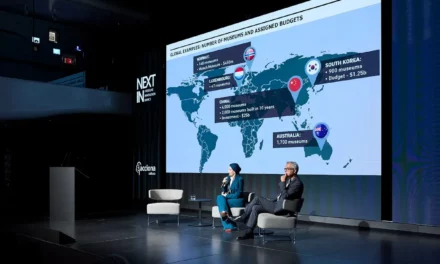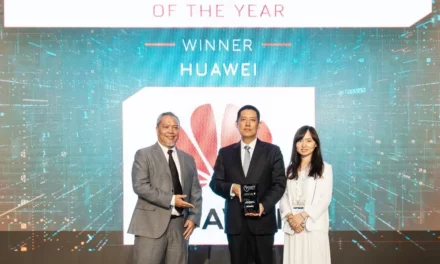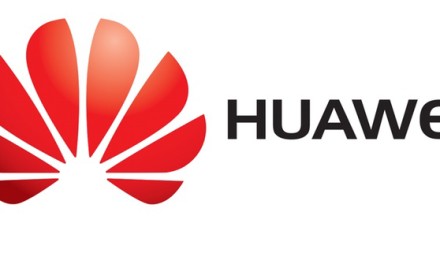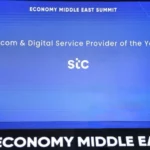
Resilient Digital Infrastructure Can Herald A New Era of Intelligence for Regional Digital Finance Industry

All industries across the Middle East and Central Asia are accelerating digitalization, and industrial finance has also entered the era of industrial digital finance 3.0. AI is transforming society and driving digital transformation, creating new opportunities for innovation. However, the digital finance industry in the region stands at an important juncture where there’s pervasive penetration of smartphones and high-speed internet connectivity, and more consumers are calling for digitalization of the banking and finance industry.
The Middle East, North Africa, and Pakistan region is expected to grow substantially in fintech revenues, from $1.5 billion in 2022 to $3.5-$4.5 billion by 2025. This growth is attributed to the increase in fintech in the banking sector, which is expected to grow from less than 1 percent to 2-2.5 percent. By 2025, mobile wallets are projected to account for 55% of global retail banking transactions, with card transactions at 30%, and cash at just 10%.
To explore how the financial industry can build resilience to boost intelligence, Huawei hosted a Digital Finance Session themed “Non-Stop Banking, Resilience Boosts Intelligence” at the leading global tech trade show, MWC Barcelona 2024. At the session, Jason Cao, Huawei’s CEO of Digital Finance BU, emphasized that resilience is the foundation for everything and elaborated on how to build infrastructure resilience in the intelligent era.
Digital financial services represented by real-time payments are booming in the digital world. Open Banking and scenario-based finance drive the transformation to open architectures. Generative AI is increasing in key financial engagement and software development areas.
All of these changes pose new challenges to resilience. According to Huawei, we must redefine and consolidate resilience to better accelerate intelligence development: ensure zero downtime and high availability of financial services, deliver a zero-wait user experience, and achieve zero-touch operation while ensuring zero-trust service and data security.
Some regional banks have already led the digitalization wave. For example, Riyad Bank is one of the largest financial institutions in the Kingdom of Saudi Arabia and the Middle East, with a solid corporate and retail franchise. Mobilizing its substantial capital base, Riyad Bank is a leading financier and arranger of syndicated loans in the oil and petrochemical industries and most of Saudi Arabia’s notable infrastructure projects.
Riyad Bank is helping Saudi Arabia realize its Vision 2030 goals and aspirations by supporting the nation’s digital transformation, developing the private sector, and establishing economic partnerships. Riyad Bank has adopted new technologies as a part of its integrated digitization processes.
Given that data is any bank’s core asset. Data stability, security, and data computing power all affect the quality of service customers receive and the productivity of a bank. Thus, Riyad Bank built a storage system in partnership with Huawei that is open, secure, reliable, agile, and easy to maintain. Riyad Bank is the first bank in Saudi Arabia to deploy a 3-data center (active-active + remote replication) solution to meet the requirements for 24/7 intra-city active-active service continuity and disaster recovery.
Huawei has served over 100 financial institutions globally, with 53 of the world’s top 100 banks and two-thirds of China’s top 20 banks choosing Huawei to build their data and AI platforms. Huawei has dedicated 14 years to the financial industry. Huawei has served over 3,300 financial customers in more than 60 countries and regions, including 50 of the world’s top 100 banks.
Enhancing Data-Driven Decisions
The financial industry has accumulated vast amounts of data. Huawei believes that to unleash the value of this data, the industry needs to take four leaps: from operation to data, from data to information, from information to knowledge, and from knowledge to action. These four leaps require upgrades in data architecture, governance, consumption, security, and talent.
Take data consumption as an example. It’s essential to change the traditional passive way of supplying data. To do this, we need to build a centralized data service platform that enables proactive data supply to which data can be subscribed, allowing the staff of both banks’ head offices and branches to use data.
Ideally, all financial data is easy to use in one day and can create value. Huawei has been taking key measures to achieve this goal. The company is building leading architectures, enhancing efficiency, enabling scenarios, and delivering excellent services.
Huawei’s strategic focus is on four primary directions: building resilient infrastructure, accelerating application modernization, enhancing data-driven decisions, and enabling scenario innovation. To achieve this, the company has developed solutions to help customers make full connectivity featuring agility, experience, and collaboration and gain real-time, converged, and shared intelligence, enabling ubiquitous all-scenario financial services.
Resilience boosts intelligence. In the digital world, all changes pose new challenges to resilience. Huawei believes that we must redefine and consolidate resilience to achieve non-stop banking better: ensure zero downtime and high availability of financial services, deliver a zero-wait user experience, achieve zero-touch operation while ensuring zero-trust service and data security, and accelerate intelligence development.
















































